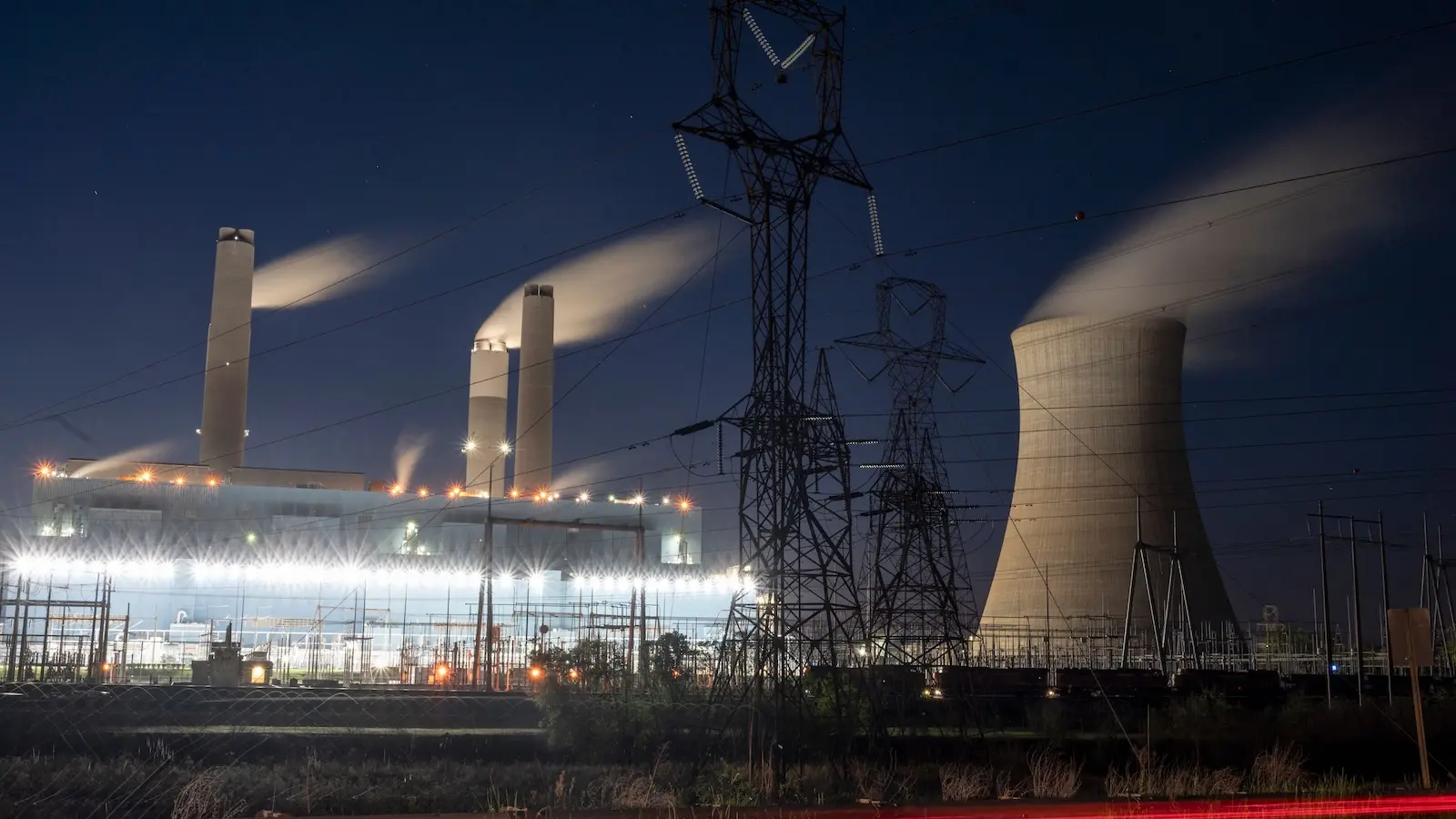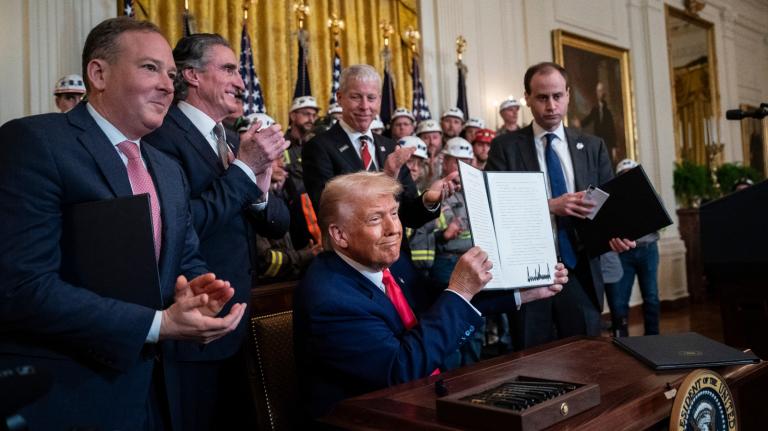The Supreme Court on Monday weakened a law protecting federal regulations from lawsuits, granting the companies governed by those rules more time to challenge them. The move effectively eliminates any statute of limitations on rules issued by a wide range of federal agencies, potentially placing even long-standing regulations in legal peril.
That ruling came just days after the court, in a seismic decision, overturned the Chevron doctrine. The decades-old legal precedent provided the basis for regulations governing countless aspects of daily life, from the environment to labor protections. These decisions, coupled with two others issued last week, could sharply curtail the authority of the Environmental Protection Agency and other federal agencies to limit air pollution, govern toxic substances, and set climate policy.
“This term, a series of decisions unlike any before in American history,” has resulted in “an unraveling of the responsibility that expert agencies have to protect millions of Americans from harm,” said Vickie Patton, general counsel at the advocacy group Environmental Defense Fund.
Although these lawsuits challenged the power of a range of agencies, from the Securities and Exchange Commission to the Department of Commerce, the decisions will have widespread impacts on those issuing climate policies. The EPA in particular has drawn scorn from conservatives who have long argued that its regulations pose an undue burden on everything from power generation to construction.
In one decision after another, the court’s conservative justices largely agreed. In its most far-reaching ruling, handed down Friday, they threw into question the future of environmental and climate regulations by overturning the precedent that gave federal agencies authority to interpret laws based on their expertise and scientific evidence. It will be years before the full impact of its decision to scuttle Chevron becomes clear, but it could prompt lawsuits aimed at regulations designed to mitigate climate change.
“There’s no question that there will be a flood of new challenges to settled policies by virtue of this decision,” Sean Donahue, an attorney who represented the Environmental Defense Fund in the case, told reporters on Friday.
The two lawsuits that led to the decision stemmed from a Commerce Department regulation requiring fishing companies to pay the cost of having third-party observers aboard each vessel to prevent overfishing. What started as a squabble over a narrowly focused rule expanded into a larger question of whether Chevron should remain in place. The doctrine originated with the 1984 Supreme Court case Chevron v. NRDC (which gave the petroleum company greater leeway when applying for air pollution permits), and hinges on the idea that regulators have expertise and experience that judges typically don’t. It has been used to successfully defend federal actions under Republican and Democratic administrations.
“This is not a radical idea,” Harvard law professor Jody Freeman wrote recently. “Implementing health, safety, environmental, financial, and consumer protection laws requires a great deal of day-to-day legal interpretation which depends significantly on subject matter expertise.”

The lower courts rejected the fishing companies’ arguments and upheld the regulations in question, citing Chevron. But the Supreme Court’s conservative justices, in a 6-3 decision, struck down the idea that courts should defer to regulators. “Agencies have no special competence in resolving statutory ambiguities,” Chief Justice Roberts wrote in the majority opinion. “Courts do.”
The effect of this ruling will take years to discern, but legal scholars and climate and environmental activists said it could jeopardize current and future climate policies because it expands the power of courts to review and strike down regulatory guidelines or efforts.
“This decision shifts power dramatically away from agencies towards the courts,” said Michael Burger, executive director of the Sabin Center for Climate Change Law at Columbia University. “And in doing so, tilts the scales against regulation.”
The decision is a victory for business interests and anti-regulatory activists who framed Chevron as an example of governmental overreach by an expanding “administrative state.” Conservative organizations like the Koch network have long supported efforts to dismantle Chevron, and attorneys linked to that organization represented plaintiffs in one of the two cases that ended it.
Although the Supreme Court hasn’t applied Chevron to a case in more than a decade, the doctrine is essential to how lower court judges — who decide the majority of cases involving federal regulations — rule on any challenges to an agency’s actions. (Justice Elena Kagan, during oral arguments, noted that jurists cited Chevron in more than 17,000 cases over four decades. An analysis of lower court opinions from 2003 to 2013 found that agencies citing Chevron prevailed in more than 70 percent of cases, upholding a wide range of regulations issued by a host of agencies.)
Lawmakers and regulators, meanwhile, relied on the “reliable, predictable framework for judicial review” that Chevron provided, Burger said. Congress knew what to expect from courts when writing broad laws and allowing regulators to interpret and implement them. Agencies like the EPA and Interior Department could, in turn, issue rules knowing that the doctrine would support their authority to do so.
“Now, it’s very unclear what’s going to happen in any individual case,” he said. Without Chevron, it is “more likely that judges will say that a regulation is either outside an agency’s authority or not authorized by a statute.” That poses a particular threat to current or future rules related to the environment and climate change, two policy realms that involve ambiguities and scientific, economic, and technical considerations, he said.
That threat is compounded by the decision the court issued Monday in Corner Post v. Board of Governors of the Federal Reserve System. That ruling creates a risk that courts could soon face a deluge of lawsuits challenging even decades-old regulations.
As with Chevron, the issue at the heart of Corner Post had nothing to do with climate or environment. The suit, filed in 2021, argued that a 2011 regulation establishing debit card swipe fees was unreasonable. Because federal law states that challenges to regulatory laws must be filed within six years of the law’s adoption, the plaintiffs added a third party, Corner Post, a truck stop that opened in 2018. The plaintiffs argued that the statute of limitations should not apply because Corner Post did not exist when the regulation was adopted.
In a 6-3 decision the court agreed and said the six-year timeline should instead begin at the moment someone is harmed by the rule — effectively eliminating a statute of limitations for any federal regulation. That means any regulation, covering any topic, could be challenged in court regardless of how old it is.
Justice Ketanji Brown Jackson warned in her dissent that the Corner Post ruling, coupled with the court’s decision to discard Chevron, will unleash a “tsunami of lawsuits against agencies” that could “devastate the functioning of the federal government.” According to the advocacy group Public Citizen, the time frame eliminated by the Corner Post decision has in the past prevented challenges to regulations limiting oil and gas extraction on public land and establishing minimum wages for farm workers, among other things.
No less troubling, the Supreme Court made clear on Thursday, in a suit specifically involving the EPA, that it will stop regulations even as they are being litigated in lower courts. That’s precisely what it did in Ohio v. EPA when it paused the agency’s “Good Neighbor” rule and its stringent smokestack emissions requirements. The court majority ruled, in a lawsuit brought by Ohio, Indiana, Virginia, and others, that the EPA failed to “reasonably explain” its policy and placed it on hold pending the outcome of more than a dozen lawsuits. Environmental and climate activists worry that future challenges to federal policies could similarly “short-circuit the normal process of judicial review” by appealing directly to the Supreme Court.
Sam Sankar, senior vice president for programs at Earthjustice, called the decision a “frontal assault on the EPA.” He pointed out that unlike cases involving Chevron deference, the agency’s authority to implement the Good Neighbor rule was clear under the federal Clean Air Act and that “the EPA is required to issue rules like this.” The ruling suggests that in the future, any federal regulations, even those issued under clear legal authority, could face similar attacks.
“It casts a pall on just about any new regulation,” Sankar said.
Climate and environmental activists also took exception to how the court decided the case. By placing the matter on its emergency docket — which typically is reserved for minor procedural issues — and acting before lower courts have issued decisions, the Supreme Court brought what one expert called “procedural strangeness” to its decision-making. The ruling suggests future environmental policies could face similar challenges on the emergency docket.
“It’s really hard to say that there are any rules that aren’t subject to this kind of attack,” Sankar said.
The court also took a step, in a case involving the Securities and Exchange Commission, to sharply curtail the ability of federal agencies to enforce regulations and levy fines. SEC v. Jarkesy revolved around George Jarkesy, a conservative radio show host and hedge fund manager accused of misleading investors. The SEC brought the case before an administrative law judge — a type of jurist who specializes in highly technical areas of law and decides cases without a jury. Jarkersy was found to have violated SEC rules, fined $300,000, and ordered to “disgorge nearly $685,000 in illicit gains.” He then sued the agency, arguing that the government violated his Seventh Amendment right to a trial by jury.
The court agreed, ruling on Thursday that a defendant facing civil penalties by the SEC “has the right to be tried by a jury of his peers.” In a dissent, Justice Sonia Sotomayor said that position threatens the ability of more than two dozen agencies, including the Federal Energy Regulatory Commission and the EPA, to enforce regulations and impose fines.
“Make no mistake,” she wrote. “Today’s decision is a power grab.”
The high court has on several occasions in recent years shown a willingness to curtail the government’s ability to take bold steps to address environmental and climate challenges. Last year it limited some clean water protections, and in 2022 it restricted the EPA’s ability to regulate greenhouse gas emissions in West Virginia v. EPA. The trend could continue next year when justices hear a case challenging the National Environmental Policy Act, a bedrock law that requires environmental assessments for major infrastructure projects.
Patton from the Environmental Defense Fund says that it’s no coincidence the court has decided to take up so many environmental cases and take such aggressive steps to roll back the government’s efforts to reduce pollution and mitigate climate change.
“There are lots of powerful polluters who have long tried to unravel and weaken the laws that were enacted by Congress,” she said. “What’s new and different is that we have a 6-3 super majority on the Supreme Court that is solicitous and open to the most extreme arguments.”
That, climate activists warn, means it will only grow harder for government agencies to take the steps needed to address the climate crisis.





